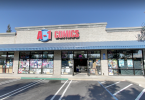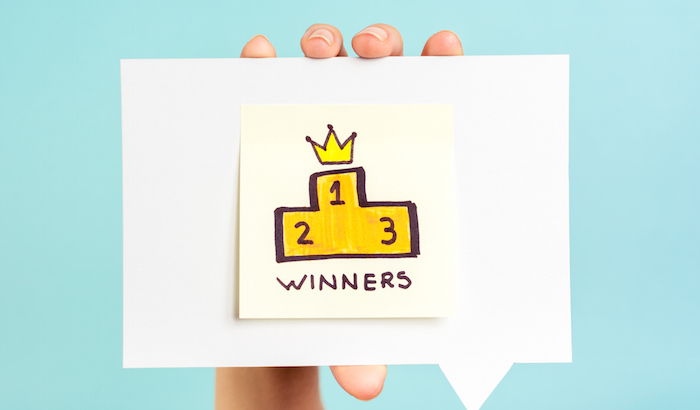What do customers really want? In a world of endless choices, what can you offer customers that’ll ensure you always remain top-of-mind (without losing your bottom line)? That’s the burning question! It’s all about creating an enticing yet effective points and rewards structure as part of your Fivestars loyalty program. You need attractive and attainable rewards in order to keep customers happy and walking back through your door.
Here, we walk through points and reward structure best practices to ensure you’re creating the best and most effective rewards structure for both you and your customers.
Create a point-per-dollar or point-per-item program
The great thing about Fivestars is that you can customize your points and rewards program based on either items purchased or dollars spent.
Traditionally, in the days of punch cards, businesses adopted a 1 point-per-item purchased program. This is easy to remember, and people are familiar with the concept. The downside to this structure, is that it doesn’t increase the average spend of a customer per visit, which we call the “loyalty impact.”
When you create a point-per-dollar program, this incentivizes customers to spend a little more on each visit than normal to attain their reward. Customers are more likely to buy gifts, add a side to their order, or get a drink, too, order a latte instead of a black coffee, get a manicure and a pedicure, etc. You get the picture. Big brands like Starbucks have even adjusted their beloved loyalty programs to move away from point-per-item and adopt a point-per-dollar structure instead.
Most of our 1oK small businesses give 1 point per $1 spent. This is also easy to remember, and employees can easily calculate and add points to a customer’s Fivestars membership/account.
Choose enticing rewards
Think about your business and why customers love you. What is a popular item or service that you offer? In the food industry, it could be specific dishes or drinks. Let’s say you own a popular pizza joint. People want to earn points for free pizza, not necessarily a T-shirt. If you own, say, a beauty supply store, customers want to earn points for either a gift certificate, or a particular percentage off, not necessarily on a very specific item they may never buy.
Give customers what they want and desire, and they’ll gladly spend more money at your business to receive it.
Here’s a list of popular reward examples:
- Double rewards/points
- BOGO (buy one, get one free or at a discounted price)
- Free upgrade with purchase
- Free item with purchase
- Particular dollar amount off
- Percentage off entire store
- Percentage off particular item (e.g., 25% off 1lb of coffee beans)
- Discounted items (e.g., $1 pastry)
- Deals on a group of items (e.g., 50% off one pastry, sandwich, or soup)
- Day of the week deals (e.g., Wednesday only specials)
Create a multi-tiered rewards structure
Think about rewards in tiers – The first tier being the easiest to achieve and the last tier being the more difficult, yet most rewarding to achieve. We suggest creating 3+ tiers, but no more than eight. The more, the better. This way, you provide your customers a variety of rewards to strive for.
When developing your tiers, use the following to determine your rewards:
Point Burners make up your initial tiers or the first tier. They appeal to your impatient customers who might spend a little per visit, but visit frequently. The reward would be something that they constantly need and could redeem easily within 2-3 visits.
Loyalty Creators are your middle tiers. These are popular or staple items that define your business. Your loyal customers strive to earn points toward these rewards and continue to return for them.
Intangibles are the tiers that are more difficult to reach, and are highly rewarding. This is where you want to thank your high-spenders and super customers. You can ensure a solid relationship by offering something that is of high value or something that is creative and personal.
Here are a couple of examples:
Casual Dining
- Earn 1 point for every $1 spent
- 50 Points = 1 Free Drink or Side
- 100 Points = 1 Free Appetizer
- 150 Points = 1 Free Entree (up to $12)
- 250 Points = 1 Free Entree (up to $25)
- 500 Points = $50 Gift Card
Retail (Clothing)
- Earn 1 point for every $1 spent
- 100 points = $5 off next purchase
- 200 points = $15 off next purchase
- 250 points = $20 off next purchase
- 500 points = $50 off next purchase
- 900 points = $100 off next purchase
What else should you consider?
Don’t make your rewards terribly complicated. People’s attention spans run short, so you want to ensure that your customers are engaged from the start.
Don’t break the bank! You want to reward your loyal customers, yet always consider your profit margins and what will not hurt your pocket. Consider progressive growth in the value of the rewards: If the first reward is an 8% return for the customer, then the next reward should be a 10% return, and so on. As customers spend more, they receive more points, and the more they save, they get more in return.
Have any questions? Let us know in the comments below.






Leave a Comment